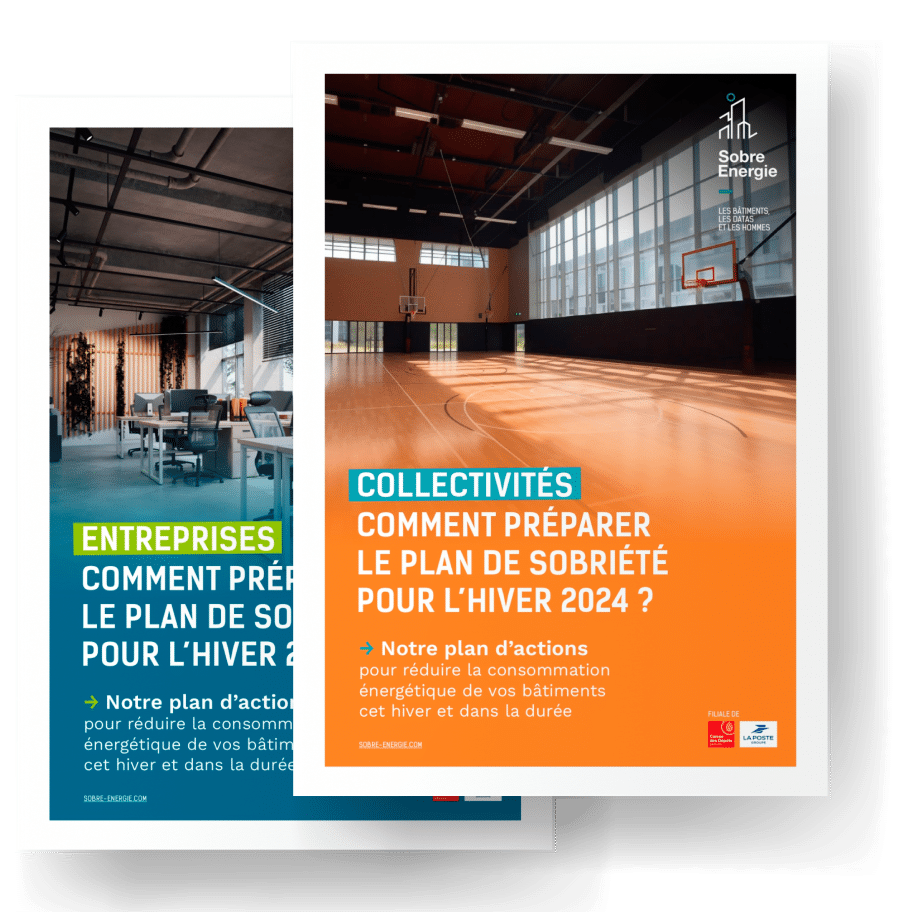It's winter, the cold is here, but at a time when energy prices are still high, how can you combine comfort while controlling your energy bill?
At the office, as at home, it's about being energy efficient: our Energy Manager shares 3 best practices with you...
Is it possible to control your bill thanks to energy efficiency?
In winter, the bill is mainly impacted by heating. It represents 50% of consumption in a tertiary building.
To master it, you have to be careful. Ademe, the Energy Transition agency, recommends a set temperature of between 19°C and 21°C in an occupied office-type building. The same goes for your stay, once you return home. No need to set the thermostat higher: if you find that it's a little tight, putting on a warmer sweater or using a blanket can improve your comfort, without increasing your bill.
The temperature felt also depends on the level of humidity in the room. Discomfort for users appears when the relative humidity falls below 35% or is above 65%. With a high humidity level, there will be a tendency to increase the set temperature (excess energy consumption). It is therefore advisable to ventilate the room even in winter. Without forgetting of course to turn off the heating when the windows are open. And what's more, it's also good for letting pollutants escape, because it brings fresh air inside the room.
The golden rule is to program the thermostat correctly?
Yes, you should remember to adjust the thermostat to reduce the set temperature during periods of unoccupancy, what we call a reduction for the night or the weekend, for example when the building is empty.
The setpoint will then be 16°C. And if the building remains unoccupied for more than 48 hours, the temperature can even be lowered to just 8°C.
With heating, 1°C more temperature setpoint induces additional consumption of 7% per degree increased. It is important to measure the exponential growth of this overconsumption: If I set the temperature to 23°C, consumption will increase by 7% compared to 22°C, but by 31% compared to 19°C.
Also be careful not to obstruct the radiators, for example by transforming it into a shelf to store things.
The presence of an obstacle in the path of the air flow prevents its proper diffusion which, if compensated, will cause excess consumption and discomfort for the occupants.
In addition, with our DATAMARC NEO platform and our connected room sensors, you can check in real time whether the set temperature is being respected. This functionality allows you to better control your energy consumption by ensuring optimal regulation of your equipment.
Is lighting the other item of energy expenditure in winter?
The days are getting shorter and lighting therefore constitutes an energy-consuming item in offices in winter. Fortunately, solutions exist to be more economical in energy consumption.
First, the replacement of old lighting fixtures with more efficient equipment (LED type).
Then, lighting control which is crucial to reduce the energy bill:
When they do not have any regulation, certain zones that are not always occupied are likely to remain lit permanently, even though lighting is not required. This is the case for example for these spaces:
- Sanitary
- Entrance halls
- Internal circulation
- Relaxation rooms and cafeteria
- Meeting rooms
In these premises, controls can be implemented to limit lighting only when necessary:
- Motion detectors: the lighting only turns on when a user passes.
- Timer: it allows, after automatic switching on, to turn off the lighting automatically after a certain duration.
Furthermore, with a GTB, it is also possible to control the lighting of your entire building!
